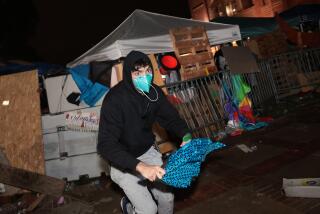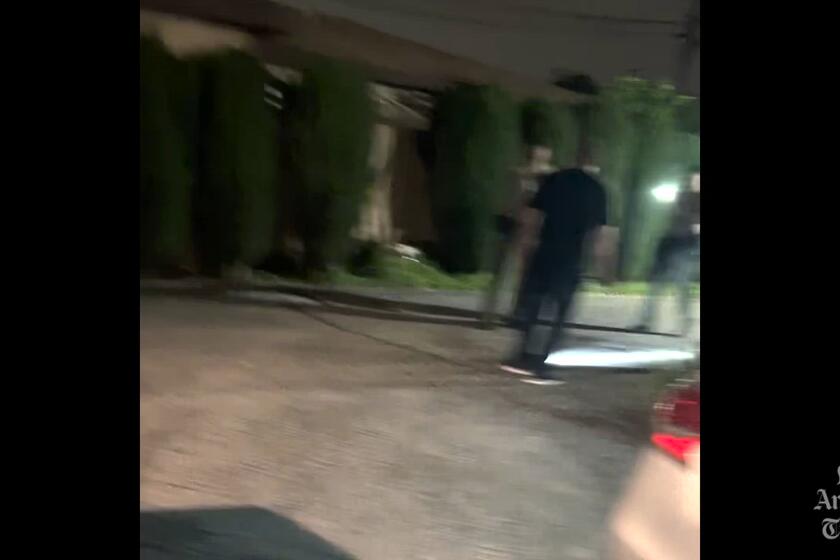CITY TERRACE : Desire to Aid Youths Unites Seminarians
Inside a two-story house, just behind St. Lucy’s Catholic Church, several men sit playing guitars and singing of their love for God.
The men, all in their 20s, traveled from as far away as Central America to work in Southern California as waiters and gardeners before re-embracing Roman Catholicism and deciding to become priests. The house, a seminary called Casa Calasanz, is their first stop on the long journey to ordination.
The seminary almost closed for lack of money a year ago, said Father Joaquin Hereu, the seminary’s vocational director. A last-minute infusion of funds from the order of Piarist Fathers, or the Calasanzians, allowed Hereu to keep it open. The Calasanzians, in the Catalonia region of Spain, founded the house 10 years ago.
“The problem was, we set up a new house in Camarillo and it drained us, so we were thinking of closing (Casa Calasanz) for a year,” Hereu said.
He added that the families of the seminarians help with the house’s expenses, “but we provide for their medical bills, studies, food. It’s a real effort and a real burden, and we think it’s worth it.”
The seminarians’ day is filled with classes and prayer. Since they must have high school diplomas to become priests, Casa Calasanz helps make sure they graduate or earn an equivalency degree. They take classes at East Los Angeles College or Garfield Adult School in the mornings, then return to the house to learn guitar and Latin.
After a year at Casa Calasanz, the 12 seminarians will study in Mexico for two or three years, then return to study in the United States, at St. John’s Seminary in Camarillo.
“The first thing that I noticed being here (at Casa Calasanz) is I felt that I was in the right place,” said Andres Mota, 27, who converted when he was 22.
The order’s focus is on youth, and it leads youth groups at six area parishes.
Many of the seminarians have lived troubled lives and were drawn to the church through the Charismatic movement, a type of “born-again” faction among Roman Catholics. “For most of them . . . the reason they are here (is) to help youngsters, not to give in to the pressures,” Hereu said.
Denis Portillo, 23, moved to Southern California four years ago from Honduras to be near his mother in Wilmington. But he got involved with gangs and became addicted to heroin. “I was a bad boy, yeah,” he said. “I overdosed a lot of times. That was my food. That was everything to me.”
About six months ago, Portillo said he attended a Charismatic meeting and was converted and has not touched drugs since. “I want to prepare myself the best I can here to help other people, to help these people get off drugs and out of gangs,” he said.
Not all of the seminarians were wayward, nor did all of them come through the Charismatic movement. But because the order is dedicated to youth, all of them have been drawn by the mission to help teen-agers.
“They need understanding,” said seminarian Rodolfo Prado, 24, who grew up in Michoacan, Mexico, and was a waiter in Culver City before entering the seminary. “They say they don’t have someone who understands them, so I want to understand them so they will feel good.”
More to Read
Start your day right
Sign up for Essential California for news, features and recommendations from the L.A. Times and beyond in your inbox six days a week.
You may occasionally receive promotional content from the Los Angeles Times.






